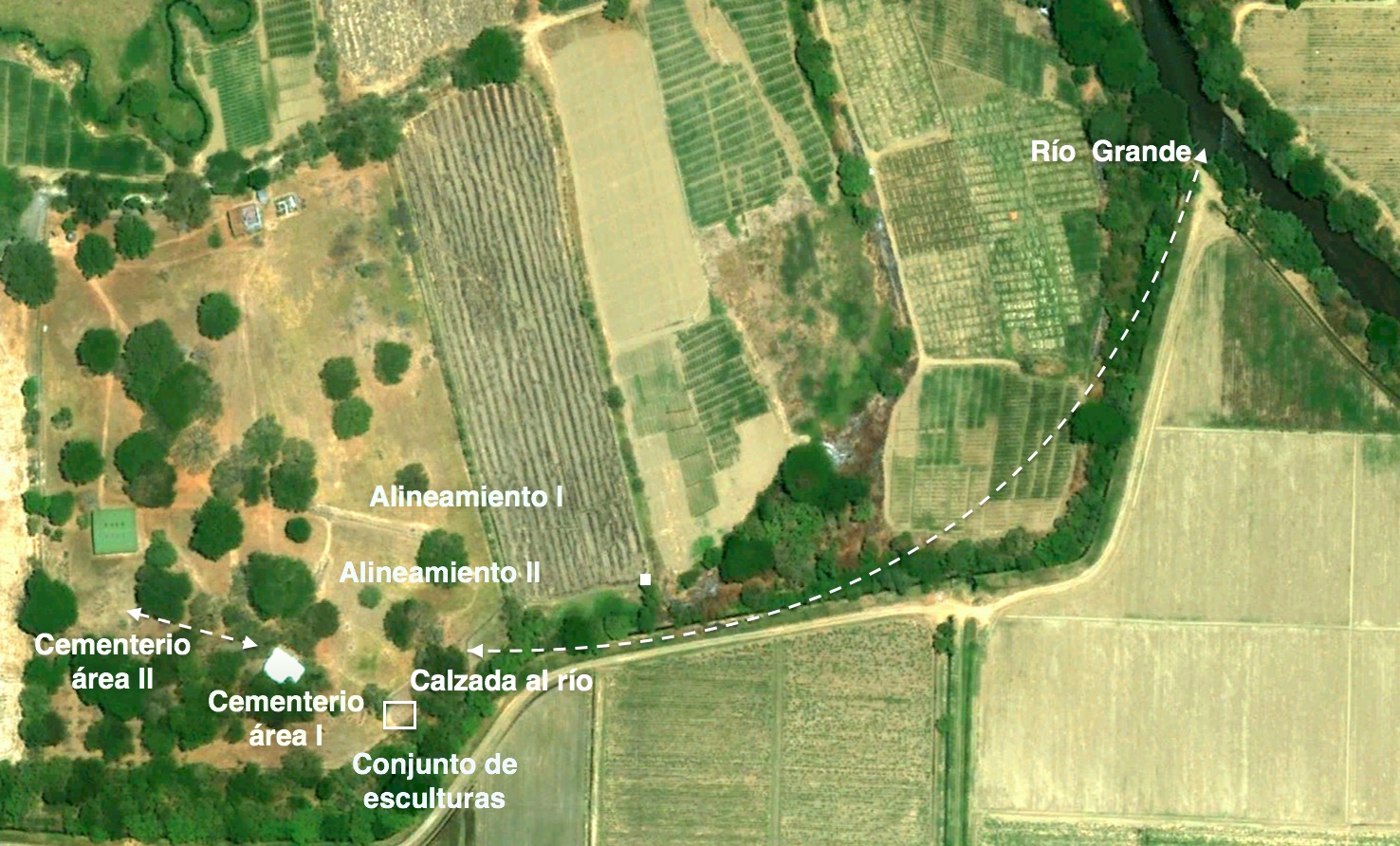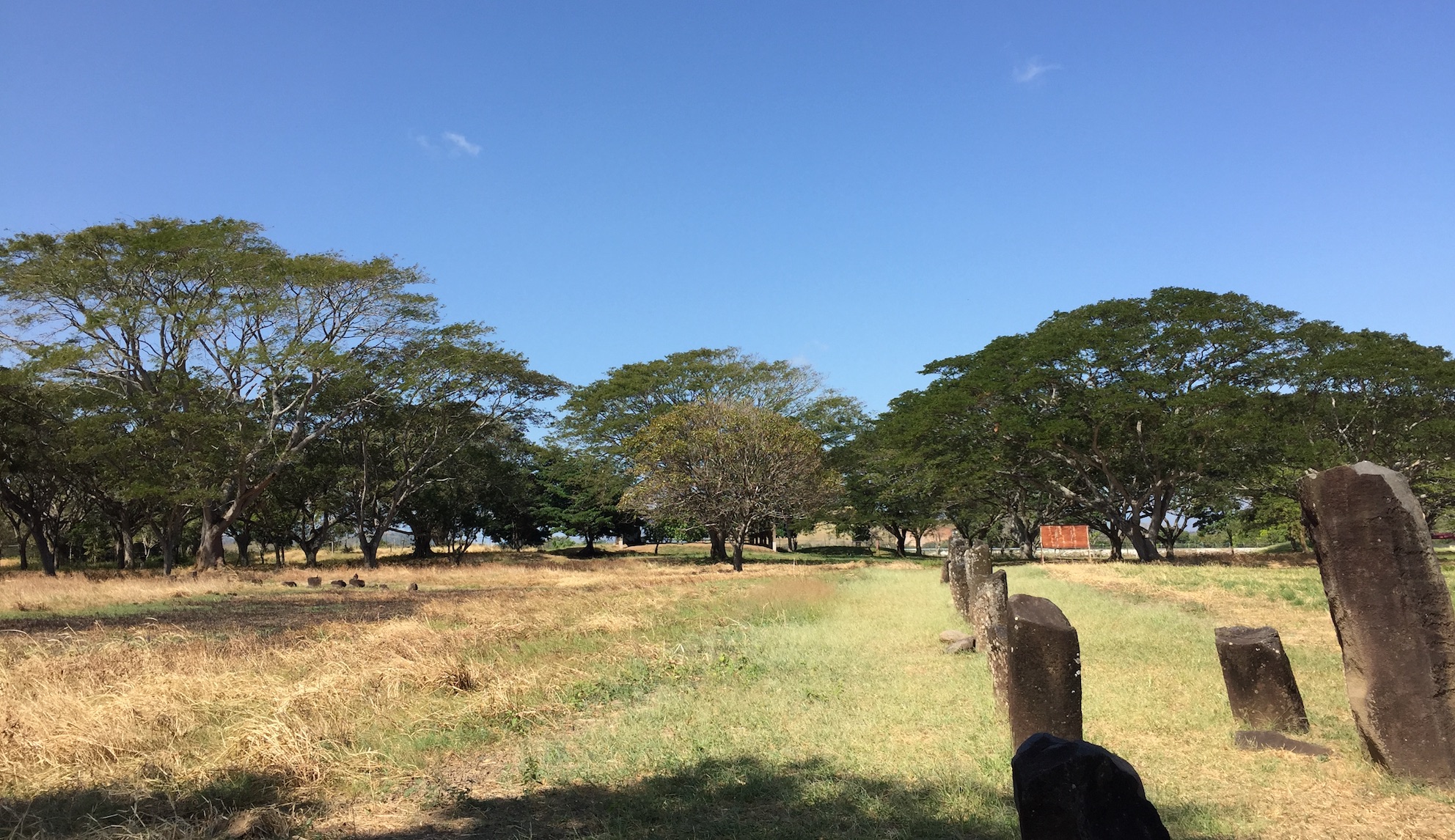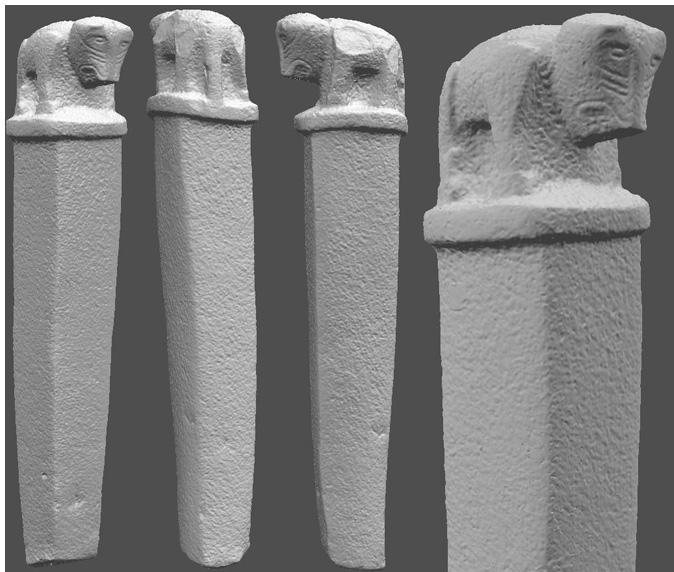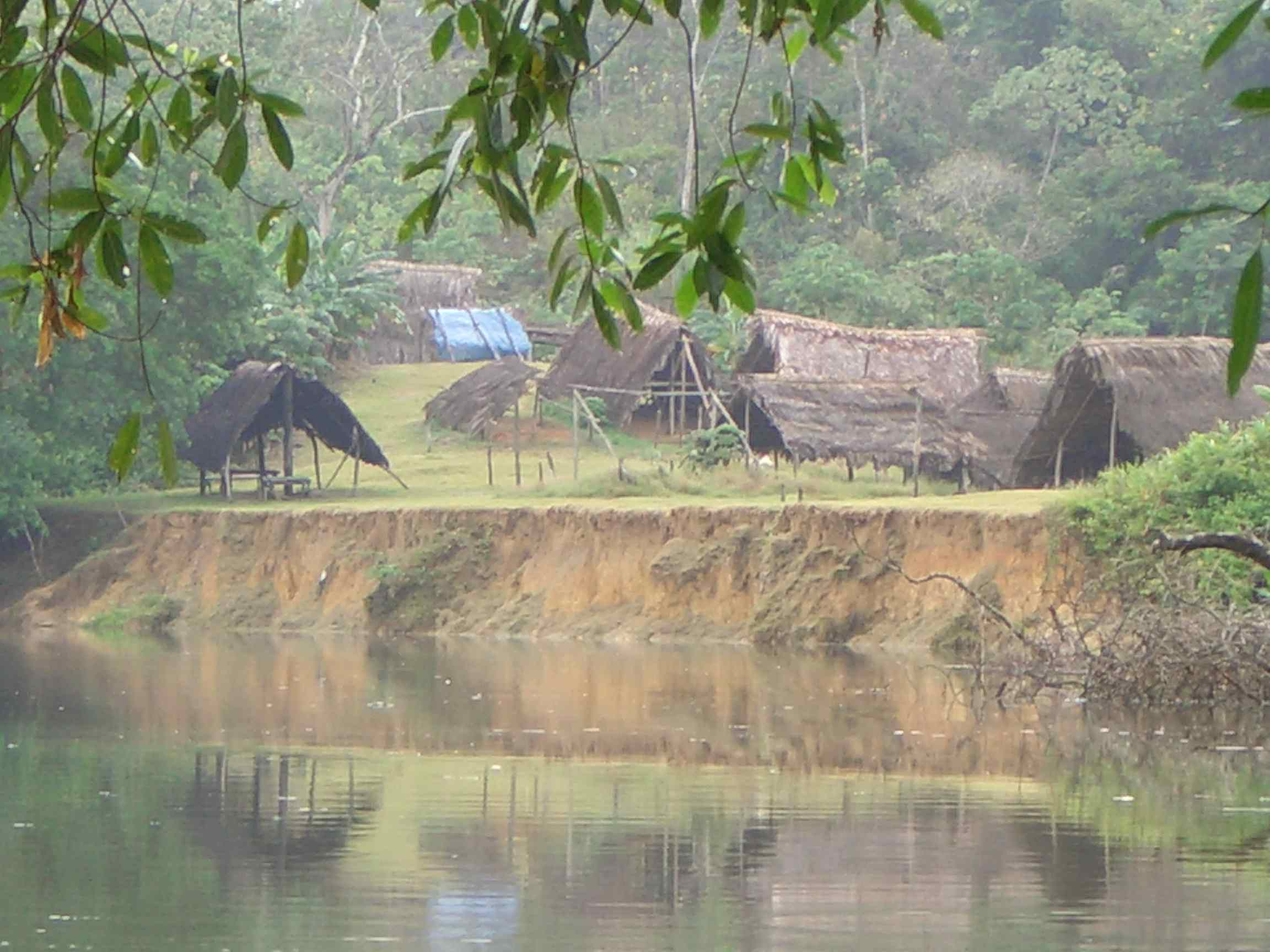El Caño Archaeological Park
THE ARCHAEOLOGICAL SITE OF EL CAÑO
Promotional video (20MB) The "El Dorado" of Panama Wanda and Jaguar Films
El Caño necropolis is located in El Caño Archaeological Park, an eight-hectare protected area on the outskirts of the modern village of El Caño, district of Natá, and on the banks of the Rio Grande of Coclé, Panama.
El Caño is one of Panama's most important archaeological sites known for its sculptural style and stone structures, basalt monoliths alignments, stone sculptures and altars, and for its burial sites.
The site contains elements from at least three different archaeological phases.
Late Ceramic A, B and D. - A and B, ceramic complexes Conte and Macaracas.
- D, ceramic complexes El Hatillo and Mendoza.
The period currently under investigation is the Late Ceramic period -the first two phases-.
Ceramics indicates that the site was occupied between 700 AD and 1000 AD, then abandoned and reoccupied a century before the conquest. The remains of horse bones and colonial beads in some indigenous burials clearly indicate that it was also used as a cemetery for some years after the conquest.

El Caño Archaeological Park is divided into three sectors.
- Area 1. The first sector, with tombs of high status people was discovered in 2008 by Julia Mayo and her research team from El Caño Archaeological Project. Since then, J. Mayo have been conducting and carrying out excavations in the area.
- Area 2. The second sector, located to the west of area 1 with tombs of low status people was excavated in the eighties of the last century and in it were located 14 individual burials.
- Area 3. The third sector, located East of area 2, has two basalt column alignments and until recently, this sector also contained a group of at least 32 stone sculptures, two basalt columns with bas-reliefs, two altars and a collection of small stone statues. These stone structures could constitute part of the ceremonial complex of El Caño of which the necropolis would also be part.

Area 1 contains three tombs from the Late Ceramic period A (700 AD), tombs T5, T6 and T8 and four tombs from the Late Ceramic period B (950 AD), tombs T1, T2, T4 and T7.
The ceramics collected in the surveys carried out in the Area 3 are exclusively from the Late Ceramic A and B periods, which indicates that the stone structures of Area 3 are contemporary with the burials of Areas 1 and 2.
All the tombs in Area 1 are large fossas that were dug in the river's alluvium and covered with wooden huts. Its walls were reinforced with wooden posts that also served to support the platforms with which they covered the burials. All of them contain multiple synchronic burials. The tombs of the first period were partially destroyed by the excavation of the tombs of the second period.
El Caño is known for its basalt monoliths alignments, stone sculptures and for its burial sites.
Tombs in Area 1 were dug in the river's alluvium and covered with wooden huts.
Cementery on the banks of Río Cartí, Kuna Yala.
A pebble road connects the necropolis with the Rio Grande of Coclé, located today 450 meters to the east





